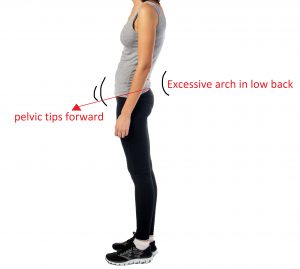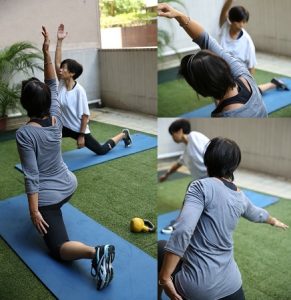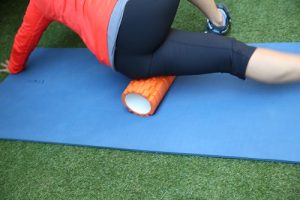Many people complain of inadequate flexibility simply due to lack of exercise in result of certain muscle groups are dominantly used in shortened positions. The daily habit of dropping the head looking down on the screens of mobile gadgets develops round shoulder with tightness in chest and front shoulders muscles. Preference side in lifting and carrying activities is another common cause to an imbalance across a number of muscles. The tissue may slowly adapt by reducing its ultimate fiber length. Repetitive movement in running, cycling can also lead to muscle tightness and adaptive shortening.
All muscles are working as a team so that we can walk, run, jump and dance.
If any of these areas lack of extensibility and stiffne ss required for the generation, dissipation and recuperation of mechanical energy, it may lead to other muscles becoming more involved in movements. This kind of compensation happens when our body seeks the path of least resistance to perform a particular movement pattern. It is not surprising to see someone who lacks of shoulder mobility will arch the low-back when he performs an overhead lift. Since the arm is limited to raise above head, the low back has to extend to a greater extent than would normally be required. Strain or pains is foreseeable due to overuse. This is a common muscle imbalance caused by the sustained poor posture in round shoulder and further induce joints problem down below the pelvis such as bad knee.
ss required for the generation, dissipation and recuperation of mechanical energy, it may lead to other muscles becoming more involved in movements. This kind of compensation happens when our body seeks the path of least resistance to perform a particular movement pattern. It is not surprising to see someone who lacks of shoulder mobility will arch the low-back when he performs an overhead lift. Since the arm is limited to raise above head, the low back has to extend to a greater extent than would normally be required. Strain or pains is foreseeable due to overuse. This is a common muscle imbalance caused by the sustained poor posture in round shoulder and further induce joints problem down below the pelvis such as bad knee.
A significant lack of flexibility can dramatically affect posture and force production at a joint, and result in impaired and often painful performance like the above case. Adversely speaking, a previous injury or microtrauma in the tightened muscle can also be the cause of muscle imbalances.
Increased joint range of motion will create greater mechanical efficiency and thereby produce safer, more effective and energy-conserving movement. However, some people may have too great a range of motion at a particular joint, possibly coupled with an increase in joint laxity. If this is the case, the specific muscles that have allowed this movement should avoid stretching through that particular range of motion. Instead, a specific strengthening program should be prescribed in order to increase the stability of the joint and to prevent future injuries in that area.
A flexibility program should be balanced to target the muscles and achieve the flexibility that is useful to a specific activity or sports you participate in. The body has greater range of motion when it does not need to control speed, tension and stabilization. But the body may not be able to provide that same range at functional speeds and loads.
It is essential to carry out flexibility assessment to screening for muscle imbalance. Old-fashioned “sit and reach” test cannot truly reflect overall flexibility as flexibility is specific to each joint in the body. It is necessary to observe the muscles as they act in movement especially how force when they work in pairs during movements. There may be a situation that the limitations in joint range of motion arise from structural problems such as caused by the joint capsule, that’s beyond the scope of fitness professional to cope with. It is more appropriate to seek for medical consultation. Any muscular limitations can be treated with proper flexibility program which composes stretching exercises and tension release techniques.
1. Stretching
Stretching is usually undertaken prior to physical activity as part of warm up. It is not surprising to see some people still using repetitive bouncing or jerky actions in stretching as they do not know how inefficient it is. In order to prepare for the dynamic activity to follow requires primarily active stretching alternatives aimed at improving dynamic flexibility.  Dynamic stretches are performed by moving through a challenging but comfortable range of motion repeatedly in a controlled and smooth manner, usually 10 to 12 times. It improves functional range of motion and mobility as more coordination is required.
Dynamic stretches are performed by moving through a challenging but comfortable range of motion repeatedly in a controlled and smooth manner, usually 10 to 12 times. It improves functional range of motion and mobility as more coordination is required.
In the post-training, stretching should not be ignored to ensure muscle relaxation, promote a return to normal resting length, and encourage circulation and the removal of waste products. A static stretch is held in a challenging but comfortable position for a period of time, usually between 10 to 30 seconds. For example, lying hamstring stretch where the hands are held behind the thigh or on the calf. With passive stretching, you relax the muscle group you’re trying to stretch and rely on external force to hold you in place. Stretching exercises can be self-administered or a stretching device is used to facilitate the stretch. A training partner can assist by gently pressing parts of the subject’s body through full range.
With active stretching, you relax the muscle group you’re trying to stretch and rely on the opposing muscle to initiate the stretch. For example, the hip flexors actively contract to stretch the hamstrings. To promote overall flexibility. Click here to learn When and how to stretch.
2. Trigger point release
The most resistance to stretch is not from the more elastic muscle fiber itself, but rather from the connective tissue in and around the muscle. The persistence tightness known as “knots” can be dealt with the following alternatives for reducing pain and tension and restoring normal muscle length and balance.

– Self-myofascial release by foam rolling
– Trigger point release techniques
– Sports massage